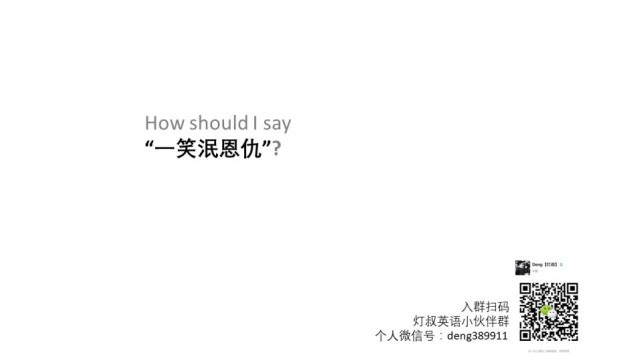2001年3月英语高级口译考试笔试真题+音频+答案
Directions: Translate the UNDERLINED PAARTS of the following passage into Chinese and write your version in the corresponding space in your ANSWER BOOKLET.
Consider the following statements, made by the same man eight years apart. “Eventually, being ‘poor’won't be as much a matter of living in a poor country as it will be a matter of having poor skills. ”That was Bill Gates talking in 1992. Way back then, the Microsoft chairman's image was that of a rather harsh, libertarian-leaning fellow who proudly declared his products alone would “change the world.” When asked what he would do with his billions, the boy wonder of Silicon Valley used to shrug off the question, saying his long workdays didn't leave time for charity. But now listen to the same Gates-or perhaps not quite the same Gages- talking in the fall of 2000: Whenever the computer industry has a panel about the digital divide and I'm on the panel, I always think, ‘OK, you want to send computers to Africa, what about food and electricity-those computers aren't going to be that valuable’...The mothers are going to walk right up to that computer and say: “My children are dying, what can you do?”
Yes, even Bill Gates, the iconic capitalist of our day, seems to have come around. The self-assured Gates of 1992 was obviously a man of his times, confident of his industry's ability to change the world, certain that the power of markets and new technology, once unleashed, would address most of the world's ills. But the more skeptical Gates of the new millennium is someone who evinces a passion for giving and government aid. He shares a growing realization, even in the multibillionaire set, that something is amiss with the ideology that has prevailed since the end of the cold war: global-capitalism-as-panacea.
SECTION 4: LISTENING TEST (30 minutes)
Part A: Note-taking and Gap-filling http://tr.hjenglish.com
Directions: In this part of the test you will hear a short talk. You will hear the talk ONLY ONCE. While listening to the talk, you may take notes on the important points so that you can have enough in formation to complete a gap-filling task on a separate ANSWER BOOKLET. You are require to write ONE word or figure only in each blank, You will not get your ANSWER BOOKLET until after you have listened to the talk.
The habit of wearing jeans is one of the major contributions of the United States to the world.
Before the 1950s, those Americans wearing jeans were children, _____________(1), manual laborers on the_____________(2)and, of course, _____________(3).But artists of both sexes and some_____________(4) male sand female students also wore them on_____________(5).In the 1950s many American schools_____________(6) them as inappropriate for the classrooms. In that period jeans started to acquire national _____________(7) in the country.
After that the popularity of jeans spread from cowboys and anomic youths to_____________(8) American of virtually every_____________(9) and socio-political posture. According to the most conservative estimates, the_____________(10)sales of jeans of all kinds in the United States in 1997 was over_____________(11) million pairs.
Overseas, American Western_____________(12) and former American_____________(13) in the Second World War both played a part in the popularity of jeans, which had to wait slightly longer for their time to come, partly because of their_____________(14) in any quantity in European markets.
Gradually, along with the_____________(15) of denim production in the United States and the rapid growth of the_____________(16) for American-made jeans, American manufacturers began_____________(17) their product in a serious way at first to_____________(18) countries and eventually to_____________(19) America and the Far_____________(20).
Part B: Listening and Translation
I. Sentence Translation http://tr.hjenglish.com
Directions: In this part of the test, you will hear 5 English sentences. You will hear the sentences ONLY ONCE. After you have heard each sentence, translate it into Chinese and write your version in the corresponding space in your ANSWER BOOKLET.
(1)____________________________________________________
(2)____________________________________________________
(3)____________________________________________________
(4)____________________________________________________
(5)____________________________________________________
Ⅱ.Passage Translation http://tr.hjenglish.com
Directions: In this part of the test, you will hear 2 English passages. You will hear the passages ONLY ONCE. After you have heard each passage, translate it into Chinese and write your version in the corresponding space in your ANSWER BOOKLIT. You may take notes while you are listening.
(1)____________________________________________________
(2)____________________________________________________











